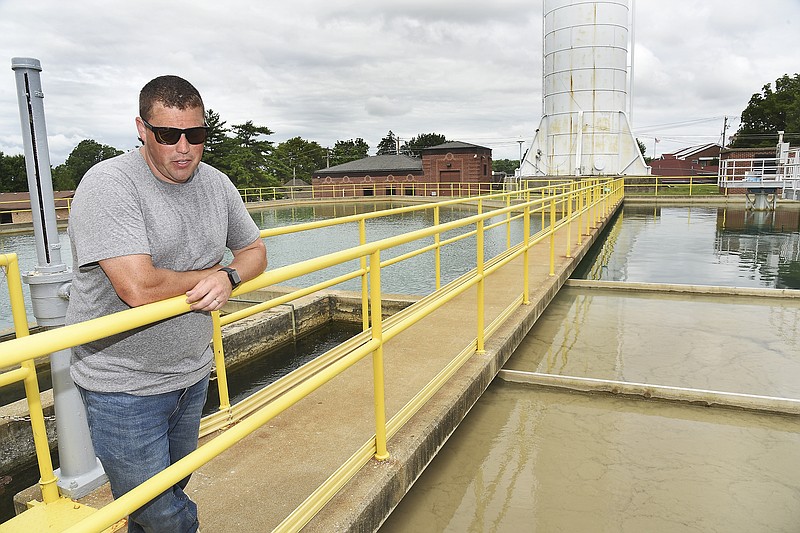When flooding on the Missouri River began in May, officials with Missouri American Water said the water was fairly hard to treat.
However, thanks to good communication with other treatment facilities and recent upgrades made at their facilities they have been able to maintain and exceed required treatment levels.
"We had to really crank up our chemicals because we didn't know what was in the water," said Curtis Wheat, senior supervisor of operations at the Missouri American water plant on West Main Street in Jefferson City.
"We had higher ammonia levels probably from lagoons and wastewater plants up stream. We added lime, which looks like a mixture of gravel and sand, and chloride, which is a liquid iron that almost looks like rust, and those chemicals settle out most anything in the water. We then added a carbon for taste and odor issues."
Wheat said they communicate with water treatment operations at Kansas City and Boonville to find out what they could be dealing with when the water gets to Jefferson City.
"Kansas City is good to say 'FYI, here's what you got coming,' so we can be two steps ahead here in Jeff City," Wheat said. "Our main concerns are between Boonville and here, but when there's more water like what we have now, it's moving a lot faster, and therefore, some of the harmful products that could be in there can dissipate quicker."
In 2017 and 2018, the plant went through upgrades to provide redundancy for existing basins, increase plant capacity, and install a new lime storage and feed system to replace existing equipment. The goal was for these upgrades to allow for increased plant capacity in the future in case customer demand increases. As of May, the company showed they served 10,800 in Jefferson City.
"Our new intake station is well above where it was in the '93 flood, so our concerns are not so much what could get into the system here but what comes into the river from upstream, such as herbicides from flooded farm fields," Wheat said.
From the time they take the water out of the river to the time it goes into the pipes for people to use, it takes 12-13 hours to get out to customers in the summer and 18-19 hours in the winter. There's 24 hours of storage at all times. The plant treats 4.5 million gallons of water each day and is licensed to treat as much as 6.5 million.
"One thing this wet weather seems to have helped us with is main breaks in the city," Wheat said. "A dry and hot summer allows for the ground to shift a lot easier. We haven't seen nearly as many of those this year."

